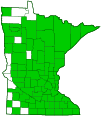Multicolored Asian lady beetle
(Harmonia axyridis)
Conservation • Description • Habitat • Ecology • Distribution • Taxonomy
Conservation Status |
|||
| IUCN Red List | not listed |
||
| NatureServe | NNR - Unranked |
||
| Minnesota | not listed |
||
Description |
Multicolored Asian lady beetle is a highly variable ladybird beetle. A native to eastern Asia and Japan, it was introduced into North America to control aphids and scale insects. It escaped and is now naturalized. It is currently widespread and abundant across most of North America but uncommon between the Great Plains and the Rocky Mountains. It is very common in Minnesota. Adults are 3 ⁄16″ to 5 ⁄16″ in length. The body is oval and dome-shaped. The transition between the head and thorax plate (pronotum), and between the pronotum and the forewings (elytra) is smooth. The pronotum is white with 4 black spots or patches that usually blend together into a W or M pattern, depending on if it is viewed from the front or from behind. There is no black on the sides. This is the only reliable identifying feature in the field. The thick, hardened, shell-like forewings (elytra) are highly variable. They may be orange or red and usually have black spots. Fully spotted individuals have 10 spots on each wing cover. The arrangement of the spots is 3-3-3-1; three spots in the first row (at the base of the elytra), the inner spot merging with one on the opposite elytra; three spots in the second row, the middle spot lower than the two adjacent spots; three spots in the third row; and one spot near the tip. The spots may be small and widely separated, or large and merge with adjacent spots. Some or rarely all of the spots may be absent or reduced to faint shadows. Sometimes there appear to be no spots. However, the placement of the spots does not change. If there is only a single spot on the elytra, it will be at one of those ten locations. The legs are usually brown or reddish. There are three variations, recognized taxonomically as forma (forms). Harmonia axyridis f. succinea is the nominate form described above. H. a. f. conspicua elytra are black with two red spots. H. a. f. spectabilis elytra are black with four red spots. |
Size |
3 ⁄16″ to 5 ⁄16″ |
Similar Species |
Seven-spotted lady beetle (Coccinella septempunctata) elytra are spotted in a 1-4-2 pattern. Two-spotted lady beetle (Adalia bipunctata) has orange elytra with 1 black spot on each side. |
Habitat |
Meadows, fields, gardens, houses. Any place having plants with aphids. |
Ecology |
Season |
Early spring to fall |
Behavior |
|
Life Cycle |
|
Larva Food |
Aphids |
Adult Food |
Aphids, thrips, mites, scale insects, and eggs of butterflies and moths. |
Pests and Diseases |
Green Beetle Hanger (Hesperomyces virescens) |
Distribution |
||
|
Sources 7, 22, 24, 27, 29, 30, 82, 83. Biodiversity occurrence data published by: Minnesota Biodiversity Atlas (accessed through the Minnesota Biodiversity Atlas Portal, bellatlas.umn.edu, 9/16/2025). |
|
| 9/16/2025 | ||
Occurrence |
||
Very common in Minnesota |
||
Taxonomy |
|
Order |
Coleoptera (Beetles) |
Suborder |
Polyphaga (Water, Rove, Scarab, Long-horned, Leaf, and Snout Beetles) |
Infraorder |
Cucujiformia |
Superfamily |
Coccinelloidea (lady, fungus, scavenger, and bark beetles) |
Family |
|
Subfamily |
Coccinellinae (common lady beetles) |
Tribe |
Coccinellini (black-spotted lady beetles) |
Genus |
Harmonia (greater lady beetles) |
Subordinate Taxa |
|
Harmonia axyridis f. aulica Harmonia axyridis f. axyridis Harmonia axyridis f. conspicua Harmonia axyridis f. equicolor Harmonia axyridis f. intermedia Harmonia axyridis f. spectabilis Harmonia axyridis f. succinea (red Asian ladybug) |
|
Synonyms |
|
Coccinella axyridis |
|
Common Names |
|
Asian lady beetle Halloween lady beetle harlequin ladybird beetle Japanese lady beetle multicolored Asian lady beetle multivariate lady beetle pumpkin ladybird beetle pumpkin ladybug southern lady beetle |
|
Glossary
Elytra
The hardened or leathery forewings of beetles used to protect the fragile hindwings, which are used for flying. Singular: elytron.
Pronotum
The exoskeletal plate on the upper side of the first segment of the thorax of an insect.
What’s in a Name?
Beetles in the family Coccinellidae are commonly referred to as ladybugs. However, the term “bug” refers to insects in the order Heteroptera (True Bugs). The family Coccinellidae is in the order Coleoptera (Beetles). The term “lady beetle” is more precise than “ladybug”.
Visitor Photos
Share your photo of this insect.
This button not working for you?
Simply email us at info@MinnesotaSeasons.com.
Attach one or more photos and, if you like, a caption.
Luciearl |
||
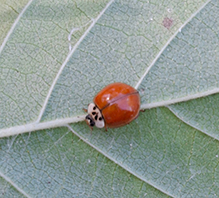 |
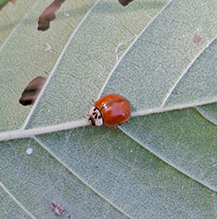 |
|
 |
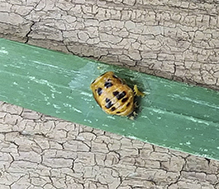 |
|
| Beetle on jewelweed |
|
|
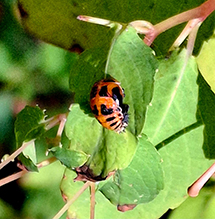 |
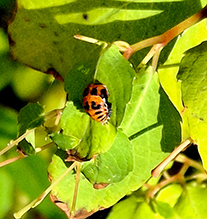 |
|
Alfredo Colon |
||
 |
 |
|
 |
 |
|
 |
 |
|
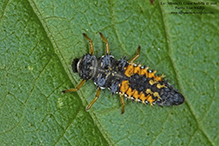 |
 |
|
Ladybug larva |
||
 |
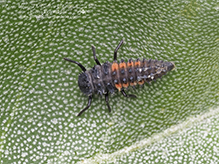 |
|
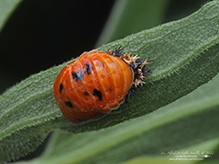 |
 |
|
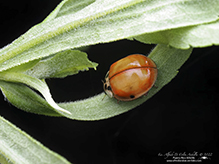 |
 |
|
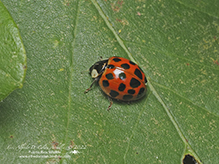 |
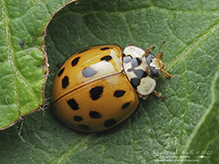 |
|
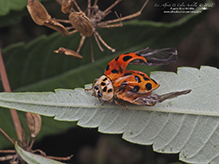 |
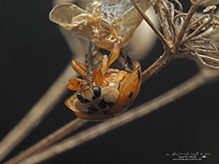 |
|
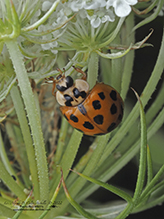 |
 |
|
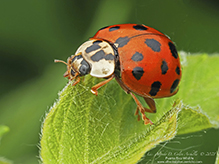 |
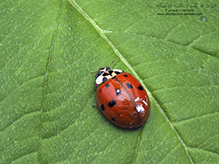 |
|
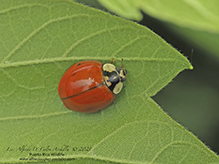 |
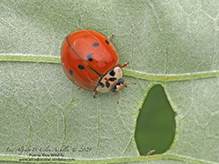 |
|
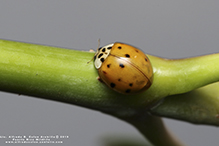 |
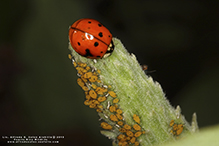 |
|
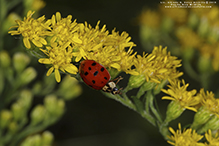 |
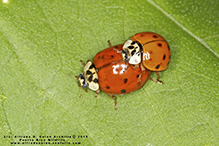 |
|
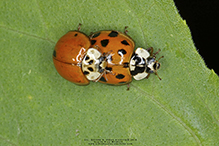 |
 |
|
 |
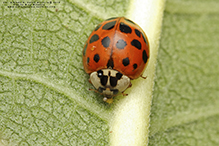 |
|
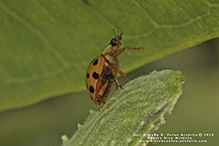 |
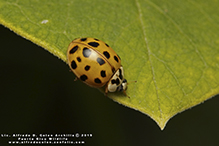 |
|
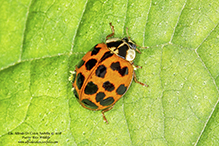 |
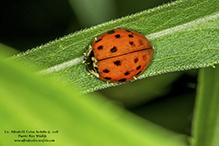 |
|
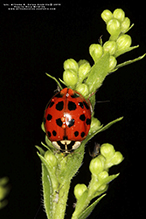 |
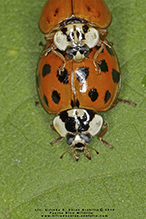 |
|
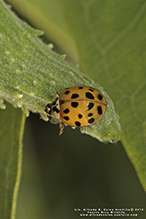 |
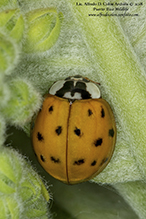 |
|
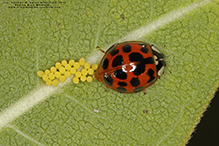 |
 |
|
Ladybug with eggs from Woodbury, MN |
Ladybug with eggs from Woodbury, MN | |
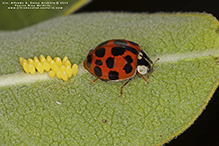 |
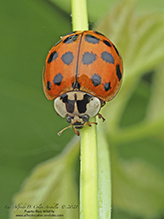 |
|
Ladybug with eggs from Woodbury, MN |
||
|
||
|
||
Bill Reynolds |
||
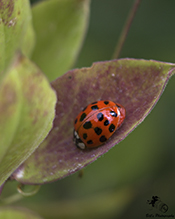 |
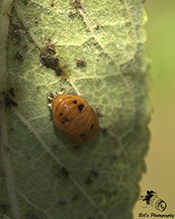 |
|
Adult |
Pupa | |
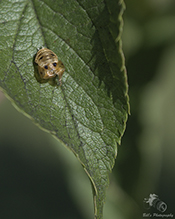 |
||
Pupa case after the adult has emerged |
||
Robert Briggs |
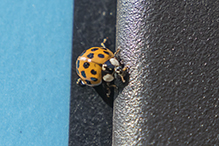 |
I guess this is one of the bad kind? |
MinnesotaSeasons.com Photos
Adult |
||
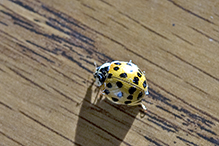 |
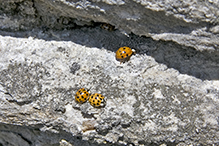 |
|
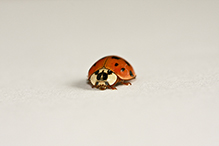 |
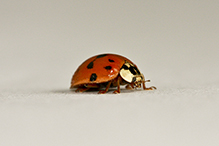 |
|
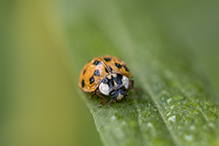 |
 |
|
Pupa |
||
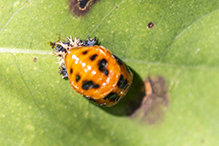 |
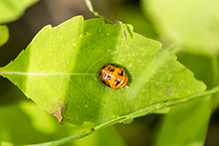 |
|
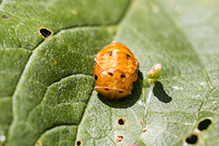 |
||

Slideshows

Visitor Videos
Share your video of this insect.
This button not working for you?
Simply email us at info@MinnesotaSeasons.com.
Attach a video, a YouTube link, or a cloud storage link.
Other Videos
A.K.5000 Harlequin Ladybird
AnimalKingdom5000
Harmonia axyridis
Bernardo Segura
Multicolored Asian Lady Beetle Larva (Coccinellidae: Harmonia axyridis)
Carl Barrentine
Harlequin Ladybirds Harmonia axyridis forms succinea (female) and spectabilis (male) pairing
DAVID ELEMENT
Multicolored Asian Lady Beetle Pupa (Coccinellidae: Harmonia axyridis)
Carl Barrentine

Visitor Sightings
Report a sighting of this insect.
This button not working for you?
Simply email us at info@MinnesotaSeasons.com.
Be sure to include a location.
Crystal Boyd
6/10 and 6/11/2013
Location: Uncas Dunes SNA

